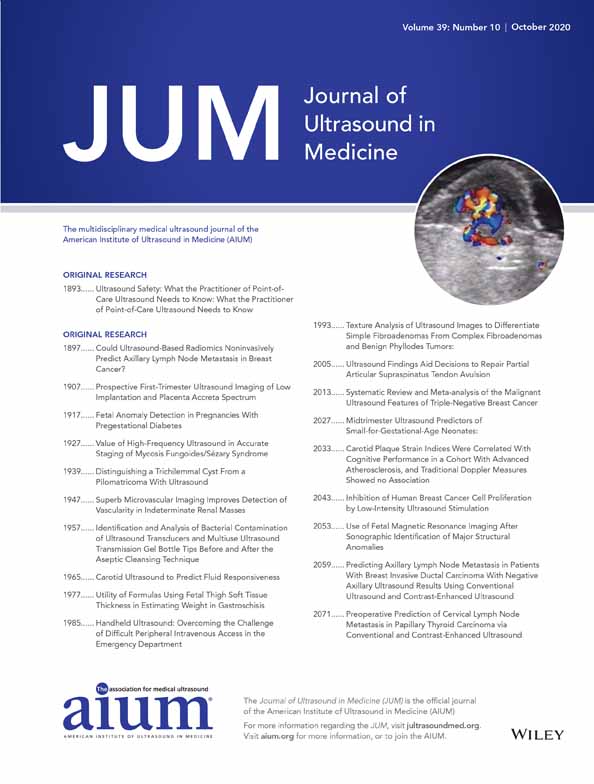Use of Fetal Magnetic Resonance Imaging After Sonographic Identification of Major Structural Anomalies
Abstract
Objectives
To characterize population-based use of fetal magnetic resonance imaging (MRI) incorporating recent American College of Radiology (ACR)–Society of Perinatal Radiologists (SPR) guidelines about fetal anomalies for which MRI may provide valuable additional information when sonography is limited.
Methods
We conducted a retrospective review of nonreferred singleton pregnancies that received prenatal care and had prenatal sonographic diagnosis of 1 or more major structural anomalies at our hospital between January 2010 and May 2018. Detailed sonography was performed in all anomaly cases. Fetal anomaly information was obtained from a prospectively maintained database, and medical records were reviewed to determine the rationale for why MRI was or was not performed, according to the indication.
Results
A total of 104,597 singleton pregnancies underwent sonographic assessments of anatomy at our institution during the study period. Major structural anomalies were identified in 1650 (1.6%) of these pregnancies. Potential indications for fetal MRI per ACR-SPR guidelines were identified in 339 cases. However, fetal MRI was performed in only 253 cases, 15% of those with major anomalies and 75% with a potential indication. Magnetic resonance imaging was not performed in 41 (20%) of identified pregnancies because of an improved prognosis on serial sonography (36), because of a poor prognosis (3), or because it would not alter management (2).
Conclusions
Fetal MRI was used in 15% of those pregnancies with prenatal diagnosis of a major structural anomaly. This amounted to fewer than 0.3% of singleton deliveries. Judicious application of ACR-SPR guidelines in the context of serial sonography results in a relatively small number of fetal MRI examinations in a nonreferred population.




